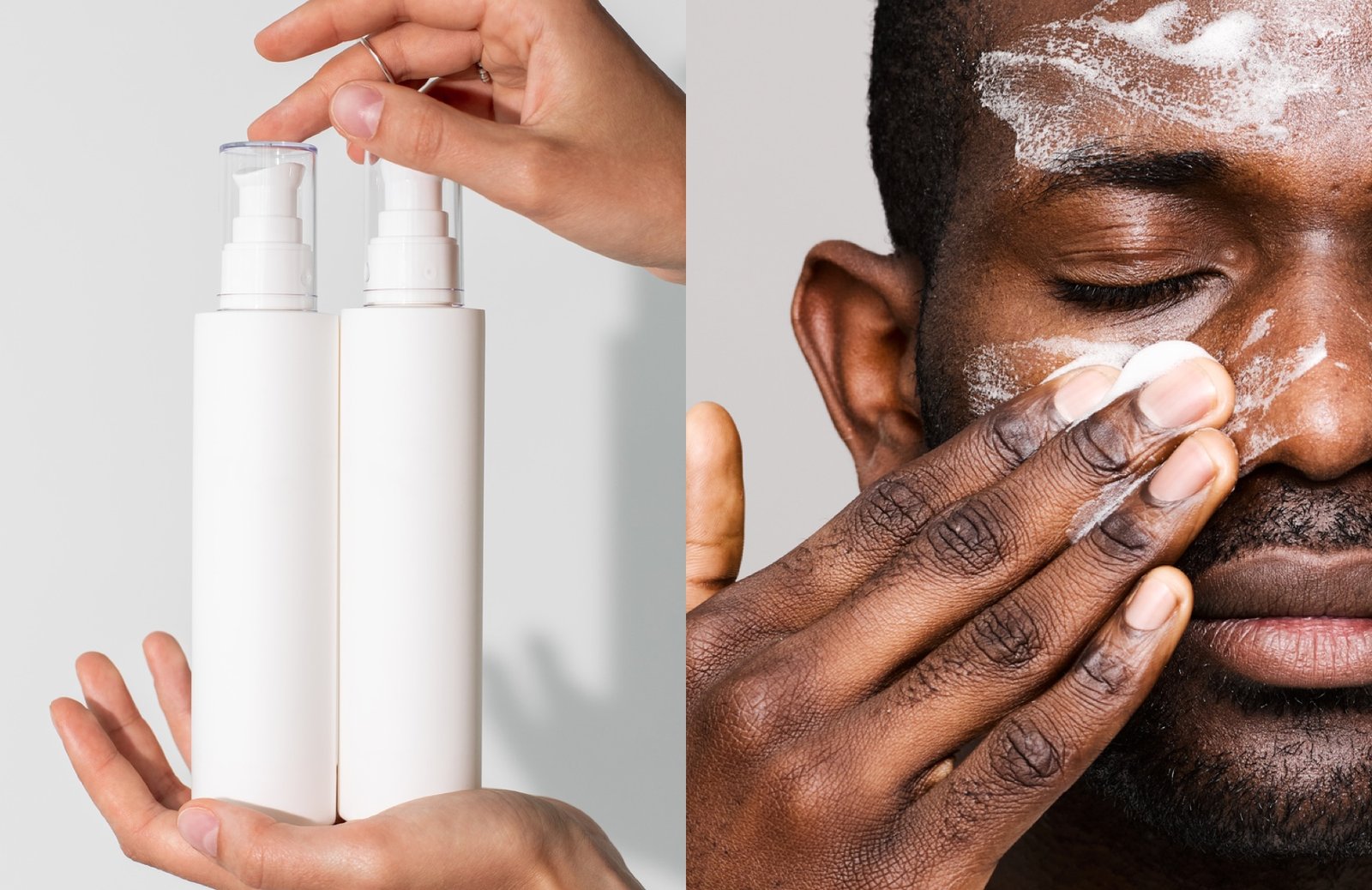Double Cleansing: A Comprehensive Analysis of a Two-Step Dermatological Method
Double cleansing is a meticulous, two-stage facial cleansing process that has transitioned from a cornerstone of Asian beauty rituals into a globally recognized dermatological practice. [1][2] Originating in 14th-century Japan and Korea as a method to remove the heavy, oil-and-wax-based white makeup worn by geishas, its modern application addresses the persistent residues of contemporary life. [3][4] It involves using two distinct types of cleansers sequentially: first, a lipophilic (oil-based) cleanser, followed by a hydrophilic (water-based) cleanser. [5][6] This report will provide an in-depth examination of the scientific principles governing this method, its tangible benefits for skin health, and a nuanced analysis of its suitability for different skin types and conditions, establishing it as a targeted strategy rather than a universal mandate.
The Scientific Rationale and Mechanism of Action
The efficacy of double cleansing is rooted in the chemical principle of “like dissolves like” (similia similibus solvuntur). [7][8] The skin accumulates two categories of impurities: oil-soluble (lipophilic) and water-soluble (hydrophilic). [9] The first step employs an oil-based cleanser—such as a cleansing oil or balm—applied to dry skin. [10] This lipophilic agent effectively binds to and dissolves oil-based substances that are impervious to water alone. [7][11] These include sebum (the skin’s natural oil), tenacious waterproof makeup, modern sunscreen formulations containing both chemical and mineral filters, and particulate matter from environmental pollution. [8][12] Modern cleansing oils also contain emulsifiers, which allow the oil to mix with water into a milky fluid that rinses away without leaving a greasy film. [1]
Following the rinse, the second step utilizes a water-based cleanser (e.g., gel, foam, or cream) on damp skin. [5] This hydrophilic cleanser targets water-soluble impurities like sweat and environmental grime. [5][13] Crucially, it also removes any remaining residue from the oil cleanser, ensuring the skin is impeccably clean. [4] This dual-action process provides a more profound cleanse than a single, often harsher, surfactant-based cleanser can achieve alone. [12] By using two gentle, targeted formulas, the method can effectively clear the skin of all debris without aggressively stripping the skin’s natural oils, which is vital for maintaining the integrity of the protective skin barrier. [10][14]
Dermatological Benefits and Enhanced Skincare Efficacy
The primary benefit of a correctly performed double cleanse is the achievement of a truly clean canvas, which has significant downstream effects on overall skin health and the effectiveness of a skincare regimen. By thoroughly removing the daily accumulation of makeup, sunscreen, and pollutants, double cleansing plays a critical role in preventing the blockage of pores. [6][14] This directly mitigates the formation of comedones (blackheads and whiteheads) and can reduce the frequency and severity of acne breakouts, making it a valuable technique for those with acne-prone skin. [12][15] Some dermatologists note that for oily skin types, this method can help remove excess sebum more gently than a single, potent cleanser, which might otherwise strip the skin and trigger rebound oil production. [15][16]
Furthermore, the state of the skin post-cleansing directly impacts the efficacy of subsequent products. A surface laden with residual impurities forms an occlusive barrier that hinders the penetration of active ingredients. Double cleansing removes this barrier, significantly enhancing the skin’s ability to absorb serums, moisturizers, and treatments. [14][17] This means that expensive and potent ingredients like retinoids, vitamin C, peptides, and hyaluronic acid can reach their target destinations within the skin more effectively, maximizing their intended benefits. [14][18] This improved absorption not only amplifies the results of a skincare routine but also ensures that the investment in such products is not wasted on skin that is not properly prepared to receive them. [10][19]
A Tailored Approach: Suitability and Contraindications
Double cleansing is not a one-size-fits-all solution; its necessity and suitability are highly dependent on an individual’s skin type, lifestyle, and specific skin conditions. The ideal candidates for this method are individuals who wear heavy or long-lasting makeup, apply water-resistant sunscreen daily, or have oily and acne-prone skin. [15][16] For these groups, a single cleanse is often insufficient to break down the layers of product and excess sebum, making the two-step process highly beneficial for preventing congestion and breakouts. [20] Similarly, individuals living in urban areas with high levels of pollution may find the method effective for removing the day’s environmental debris. [7][15]
Conversely, those with very dry or sensitive skin, or individuals with chronic inflammatory conditions like rosacea and eczema, must approach double cleansing with caution. [19][21] For this demographic, the mechanical action of cleansing twice, coupled with potentially inappropriate product choices, can disrupt an already compromised skin barrier, leading to increased dryness, irritation, and flare-ups. [5][19] However, this does not mean the method is entirely off-limits. The key is the careful selection of products; a nourishing cleansing balm followed by a gentle, hydrating, non-foaming cream cleanser can be a viable option. [22][23] For many with sensitive conditions, a single, gentle cleanse remains the safest and most effective choice, and a consultation with a dermatologist is strongly advised before adopting the routine. [21][24] Ultimately, for those who do not wear makeup or sunscreen and have balanced skin, double cleansing is often unnecessary and could lead to over-washing. [5][20]



